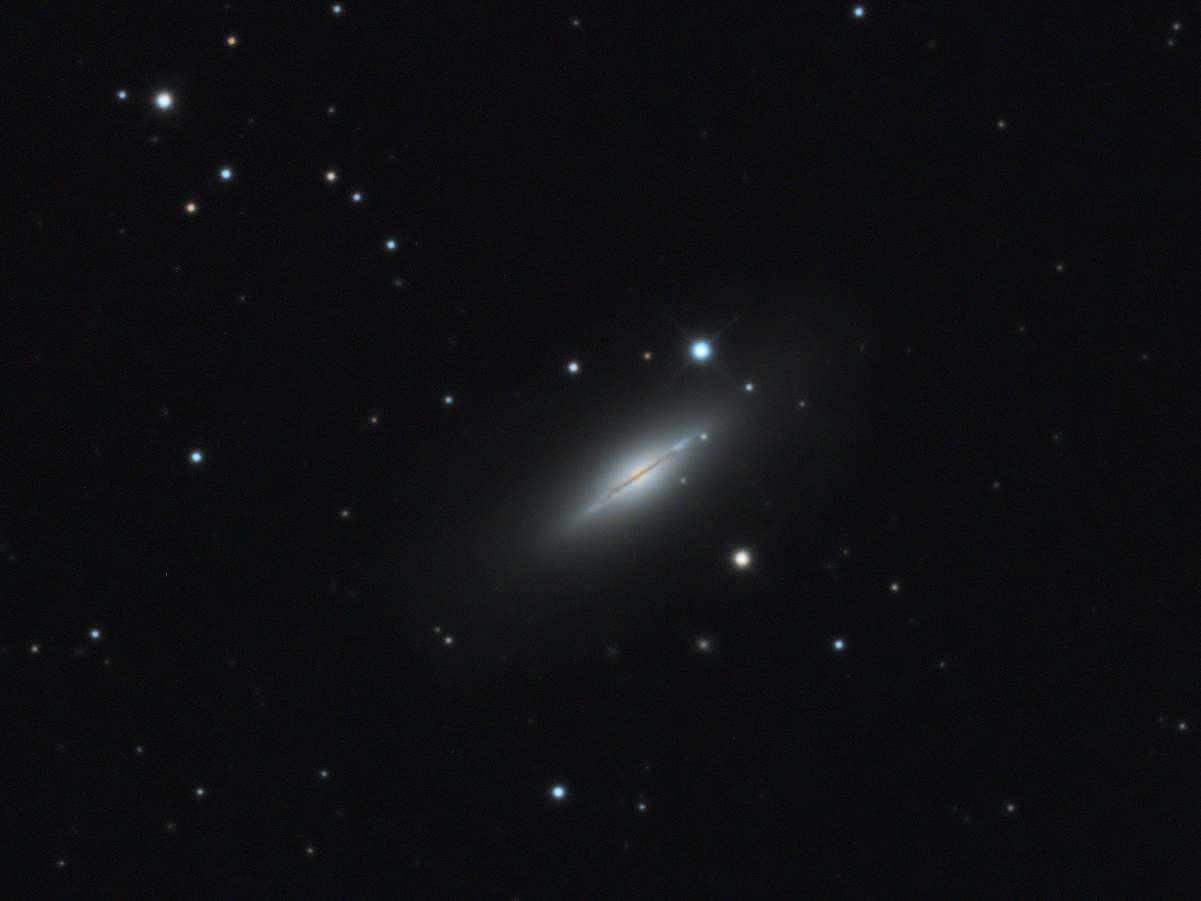Observation by David Davies: Messier 102 - the "Spindle Galaxy&q...
Uploaded by
Test User
Observer
David Davies
Observed
2019 Jun 01 - 22:00
Uploaded
2019 Jun 22 - 07:12
Objects
The Spindle Galaxy (M102)
Planetarium overlay
Constellation
Draco
Field centre
RA: 15h06m
Dec: +55°46'
Position angle: +0°13'
Field size
0°13' × 0°10'
Equipment
- 8" Ritchey-Chretien at 1660mm focal length
- QSI 583 CCD camera with Astrodon filters
Exposure
23 x five-minutes luminance and seven each of five-minutes RGB subs, all binned 1 x 1
Location
Cambridge, UK
Target name
Messier 102
Title
Messier 102 - the "Spindle Galaxy"
About this image
The Spindle Galaxy was discovered by Pierre Méchain on 27th March 1781. Méchain described the object as a “nebula between the stars Omicron Boötis & Iota Draconis,” adding that “it is very faint; near it is a star of the sixth magnitude.” Méchain probably meant Theta Boötis, not Omicron, which contributed to the subsequent confusion around the identity of M 102. Omicron Boötis is more than 40 degrees away from Iota Draconis, which makes the possibility of an error very likely. Méchain reported the discovery to Messier, who added the object to his catalogue.
The confusion about the object started two years later, in May 1783, when Méchain wrote to Bernoulli in Berlin saying that the listing of M 102 was a mistake and that the object referred to was a duplicate observation of M 101. One can imagine that M 102 could not be found due to the error in the original observation notes. It was the French astronomer Camille Flammarion who identified NGC 5866 as M 102 in his “List of the Messier Objects,” published in L’Astronomie in November 1917, arguing that the Greek letter Omicron (ο), written down by Messier, was in fact a lowercase Theta (θ). This was probably correct because the object found at this location corresponds to Messier’s description of M 102.
This galaxy was independently discovered by William Herschel in 1788. Herschel determined the position of the object on May 5, 1788, describing it as “very bright. Considerably large. Extended. Following [east of] 2 stars.”
M 102 is a spindle-type galaxy, seen edge-on and around 41 million light years distant. It is magnitude 10.7 and 6 x 3 arc minutes in extent. In this image David has captured the pearly white glow of the halo around the galaxy, the warp at the eastern (right) edge of the dust lane, something of the blue glow of star-forming regions at the western edge of the dust lane and the orange glow of old stars in the core.
Files associated with this observation
Like this image
Copyright of all images and other observations submitted to the BAA remains with the owner of the work.
Reproduction of work by third parties is expressly forbidden without the consent of the copyright
holder. By submitting images to this online gallery, you grant the BAA permission to reproduce them in
any
of our publications.


